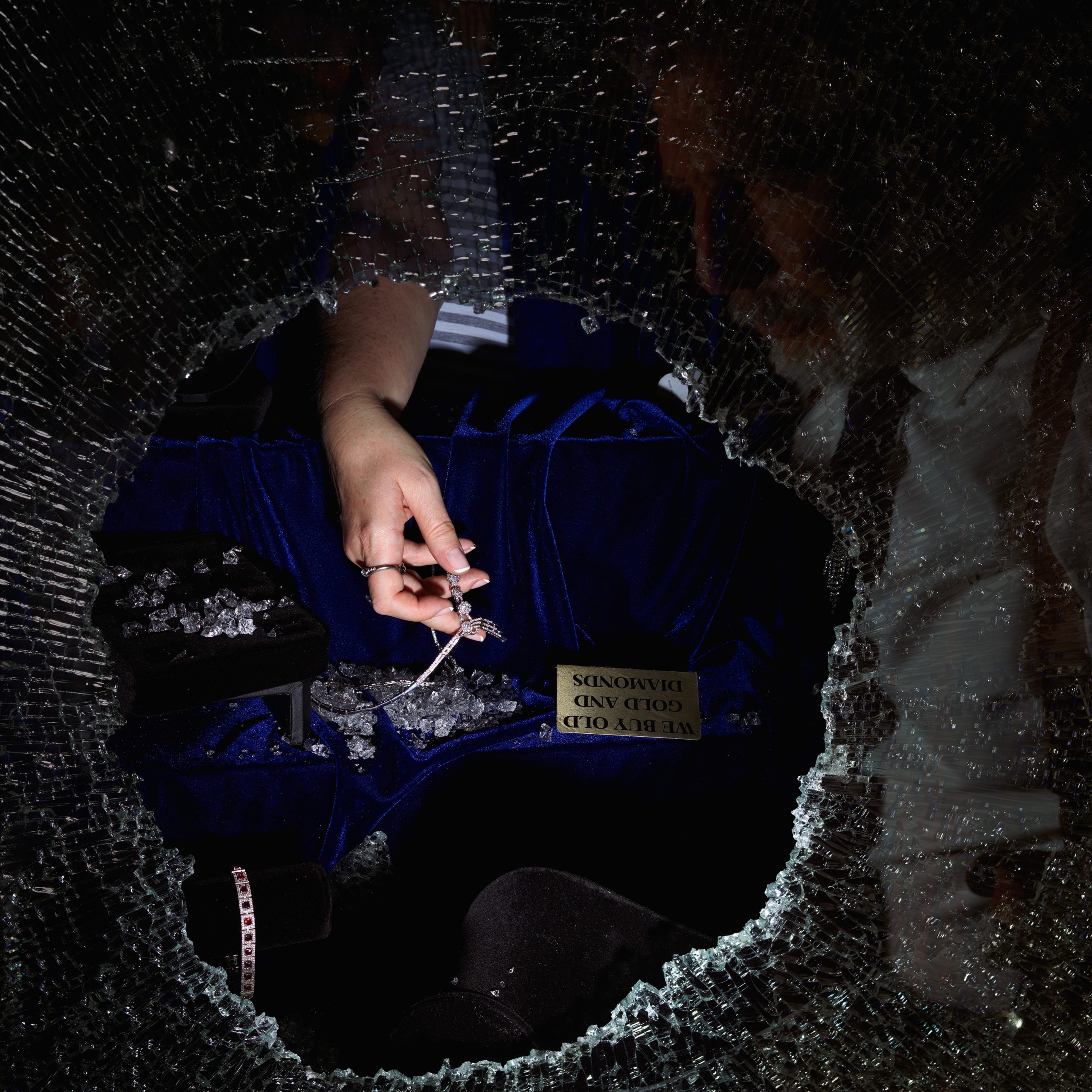
Stan Douglas has remarked that ‘life is all middle’. True to form, Doppelgänger presents two simultaneous stories with overlapping narratives and vantage points. Appropriating tropes from popular entertainment — namely sci-fi and horror — Douglas presents the alternate histories of an astronaut who is teleported into space. Upon her return, she finds she has been copied and must contend with her alien twin. Here is Douglas thinking through the position of the ‘other’ in contemporary society, while being resistant to the idea of objective truth. Buckle up for quantum mechanics, cluster headaches, and a series of forking paths.
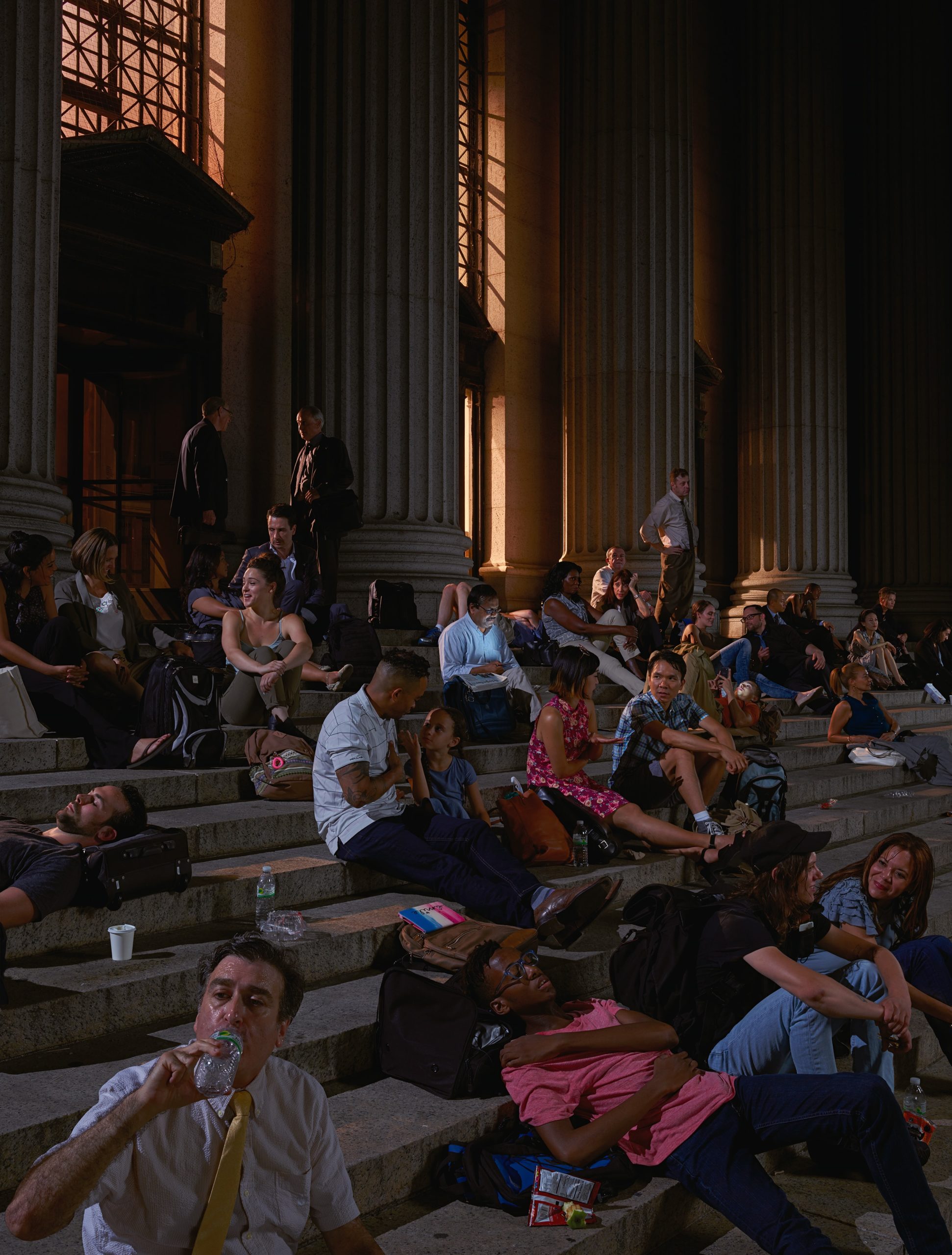
Stranded, 2017, Digital chromogenic print mounted on Dibond aluminium, 240 x 180.3 cm, 94 1/2 x 71 in, © Stan Douglas, Courtesy the artist, Victoria Miro, and David Zwirner
A sun splits in two, like a zygote: twins.
Twins, doubles — evil or otherwise — are the name of the game in Stan Douglas’ ‘Doppelgänger’ (2019), now showing at Victoria Miro. And concurrently on view at David Zwirner in New York. A parallel world across the pond.
Appearing on two square screens, side by side and viewable in front or behind, the film tells the helix story of Alice, an astronaut who is teleported into space. In tandem, it tells the helix story of Alice, an astronaut who is teleported into space — though from a parallel earth. Then, following some quantum entanglement, Alice is duplicated, and will soon meet her double.
Then, following some quantum entanglement, Alice is duplicated, and will soon meet her double.
If you’re thinking this could get somewhat puzzling, then you’re on the right track. In fact, the film uses numerous strategies in its form and content both to invite us closer and to keep us at a distance. In doing so, Douglas weaves together a feeling of displacement: an uncanny atmosphere in which to interrogate the experience of the ‘other’ in contemporary society. So, for now, just bear with me.
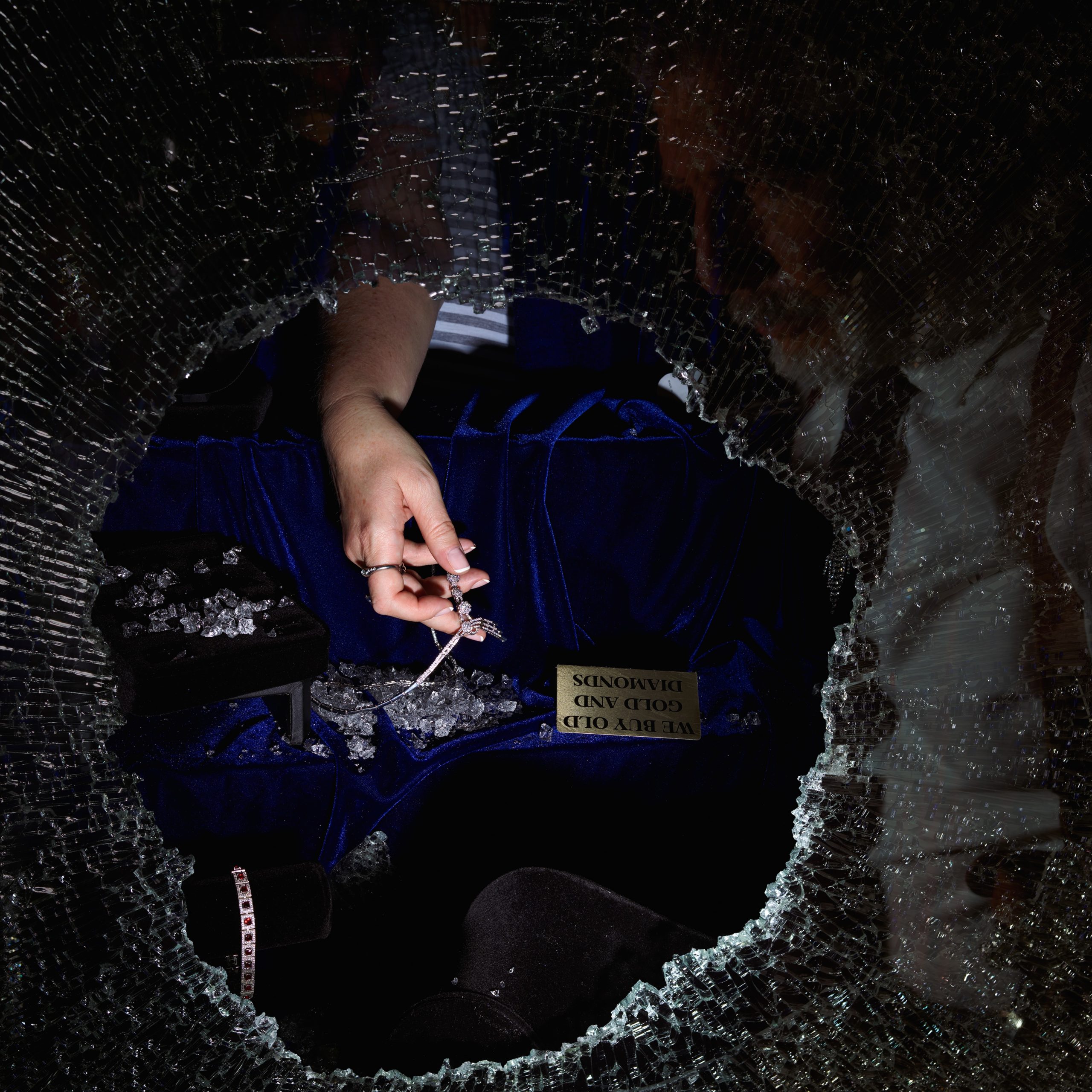
Jewels, 2017, Digital chromogenic print mounted on Dibond aluminium, 91.4 x 91.4 cm, 36 x 36 in, © Stan Douglas, Courtesy the artist, Victoria Miro, and David Zwirner
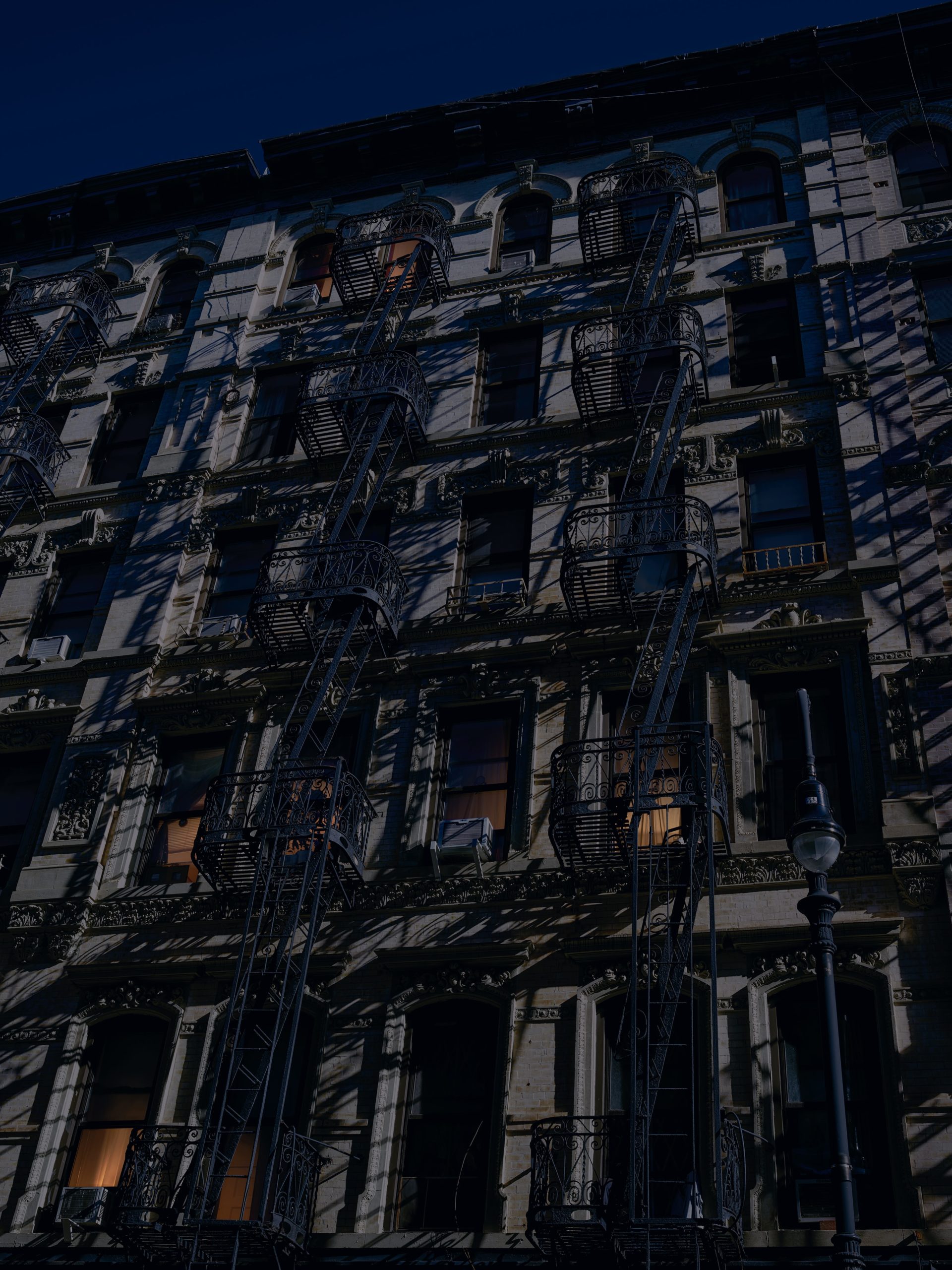
Candlelight, 2017, Digital chromogenic print mounted on Dibond aluminium, 203.2 x 152.4 cm, 80 x 60 in, © Stan Douglas, Courtesy the artist, Victoria Miro, and David Zwirner
Mission Control are shocked when Alice and her ship inexplicably return. They give her landing co-ordinates, and we see a candied parachute — and its mirror image — glide down to the sea. Cut to a box room, as seen from above: it’s the kind of liminal sequestered space in which I imagine people are interrogated at airports.
Indeed, in one version of events, Alice is treated as a dangerous alien who needs to be quarantined. In the other, however, she’s greeted warmly and with concern. Duplicate Alice’s box is lit magenta and green, while the original Alice’s glows blue and yellow. As hamster-cagey as the room appears, it’s coded with the familiar saturated palette of a Star Trek episode — the unfamiliar in the familiar.
Sci-fi tropes, down to the lighting, are easily recognisable; at the same time they are defamiliarising. Take the language, for example — quantum teleportation, B12 injections, Sodium Pentathol, entangled particles. For me, at least, jargon like this turns to texture, familiar yet strange.
Then there’s the phrase EMIT DEIFIER EVIL or LIVE REIFIED TIME that Alice sends back to Mission Control. Satanic or Marxian read forwards or backwards, the phrase seems more of a litmus test than a plot-point: what you read, and how you read into it, will depend on your perspective.
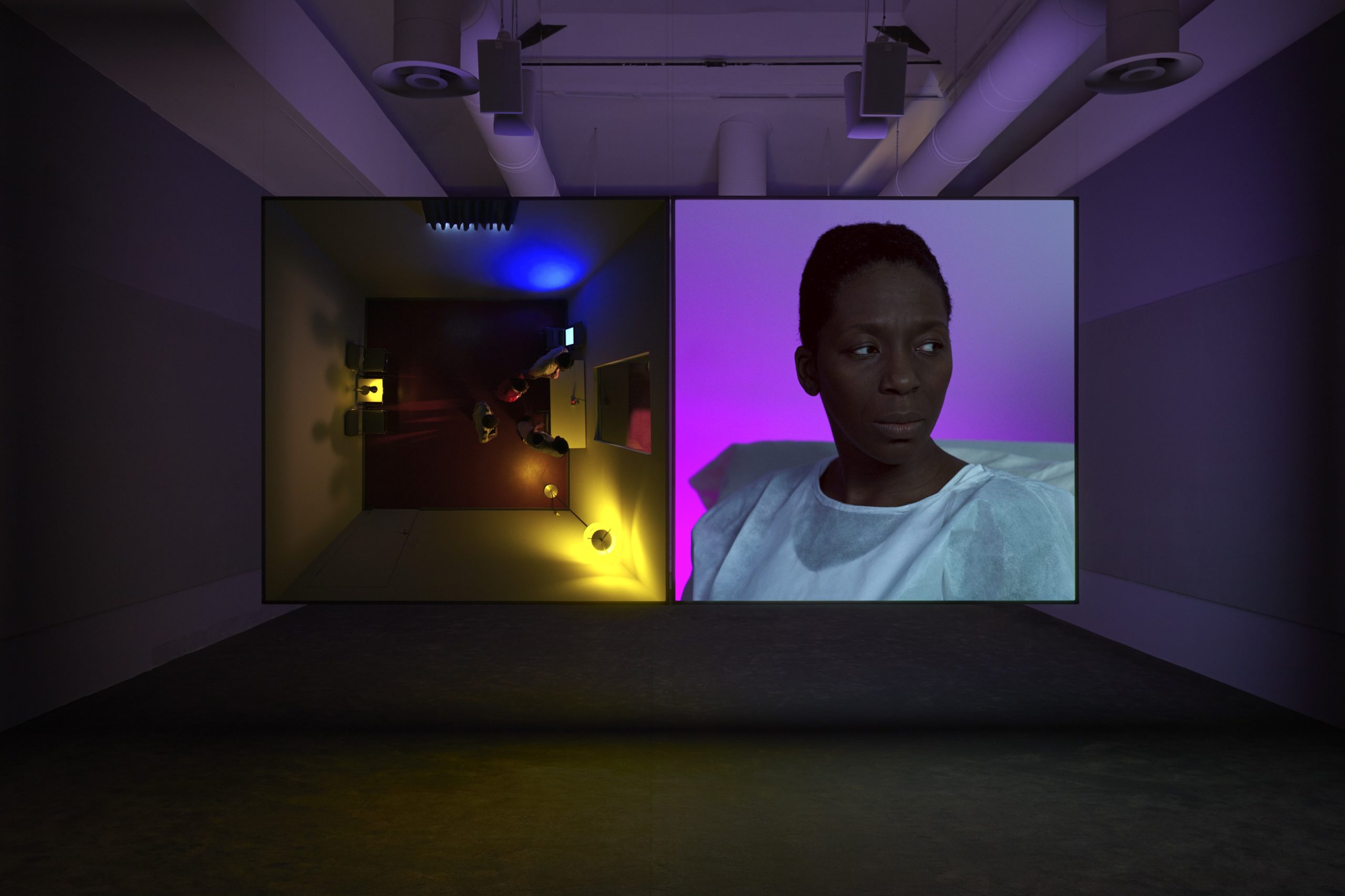
Installation view, Doppelgänger, 2019, 31 January – 14 March 2020 Victoria Miro Gallery I, 16 Wharf Road, London N1 7RW, © Stan Douglas, Courtesy the artist, Victoria Miro, and David Zwirner
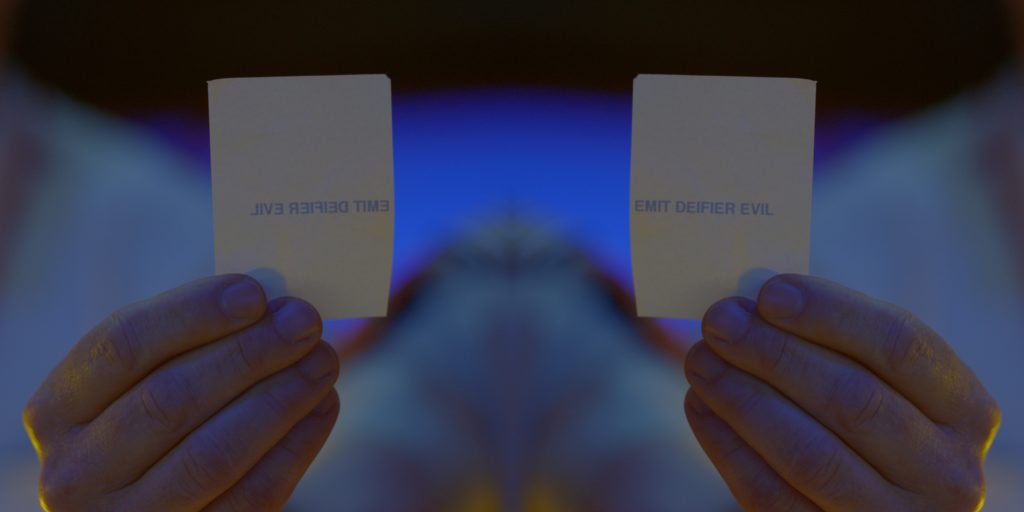
Installation view, Doppelgänger, 2019, 31 January – 14 March 2020 Victoria Miro Gallery I, 16 Wharf Road, London N1 7RW © Stan Douglas, Courtesy the artist, Victoria Miro, and David Zwirner
Douglas describes as much in ‘Video/Art: The First Fifty Years’. In the book, he says, ‘Cultural appropriation is how one learns a foreign language, and it’s maybe even how one learns one’s own language.’
A black artist living in largely white Vancouver, he describes ‘learn[ing] to think and act from two positions at once’: the dominant or majority culture, by its definition, suggests the exclusion or objectification of ‘minority’ cultures. Trying to navigate the numerous doublings in ’Doppelgänger’ evokes a similar experience of displacement and duality.
In perhaps the film’s most striking image, Alice awakes from teleportation clutching her head, trying to hold a cluster headache inside her skull. A substance too viscous to be water runs down her face and arms. On one screen, Alice appears against the bokeh lights of her ship’s control deck; on the other, she awakes against an empty black background. Contextless. It’s a moment that recalls the pain and the brilliance of birth. Who will you be, and what experiences might shape you?
It’s a moment that recalls the pain and the brilliance of birth. Who will you be, and what experiences might shape you?
Just like Alice who sets off for another world, unsure of what she might find there, immigrants travel to foreign places in search of a new, better life. Whether they are met with hospitality or hostility is up to us in our respective societies. Which kind of ending will we choose?


